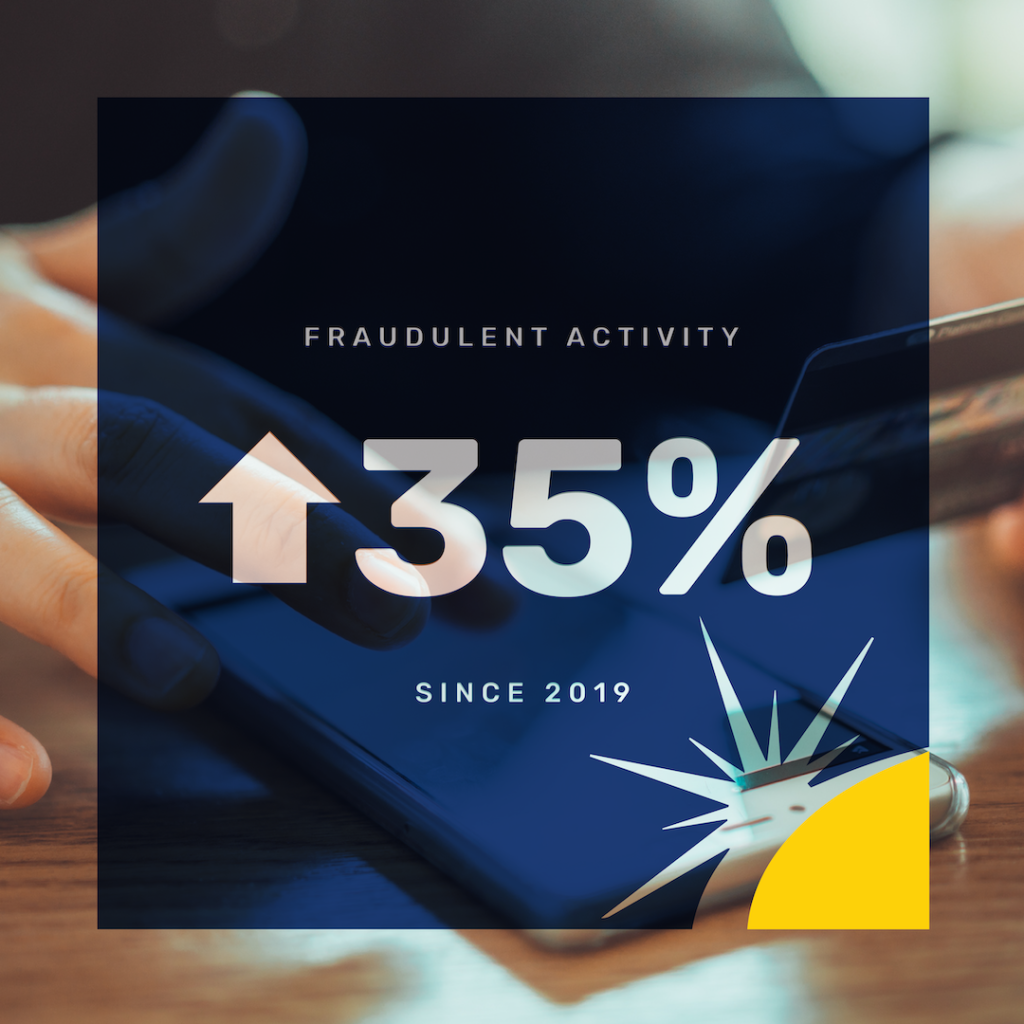Fraudulent activity is unfortunately and unquestionably on the rise since the beginning of the pandemic. According to a survey from the Association of Certified Fraud Examiners (ACFE) 51% of the organizations surveyed have uncovered more fraud since the start of the pandemic and 71% of those respondents believe the level of fraud to increase in the years to come. (King 2021) The ACFE has highlighted cyberfraud, social engineering and identity crime to be the three types of fraud that are expected to increase the most post-pandemic. Each presents unique challenges to both financial institutions, businesses, and consumers on how to be prepared and to combat these different types of fraud. This report will examine the types of increased fraudulent activities facing consumers, businesses both small and large as well as financial institutions and industry suggestions for how to best prevent them.
As stores and in-person shopping shut down as the pandemic spread across the globe these past two years consumers often had no choice but to shift towards e-commerce and card not present transactions (CNP). In fact, as much as 60% of payment sales in the US fall under CNPs. (Lynch 2021) Unfortunately, this has created increased opportunities for criminals to defraud both consumers and financial institutions. According to Fidelity National Information Services and the 3,200 banks they help with
fraud, monitoring losses from fraudulent activity are up 35% since 2019.

From the same report they estimated the average American consumer loses about US $265 per year in fraudulent financial charges made by unauthorized third parties. (Lynch 2021) These numbers are only likely to increase as consumers gravitate toward digital experiences and financial institutions are constantly looking for ways to meet consumer demand for these frictionless and real-time payment offerings. Driven in large part by the COVID pandemic, increased layoffs, and record numbers of people being sent home basically overnight to work, learn, shop and live, the number of successful cyberattacks on businesses have proceeded to reach dizzying heights. In fact, recent IDC research indicated that over the past year, more than one third of organizations worldwide experienced a ransomware attack or breach that successfully blocked access to systems or data. And for those that fell victim, many experienced multiple ransomware events. With cybercrime projected to cost the world $10.5 trillion annually by 2025, it is clear why ensuring your organization and your employees are taking the appropriate measures to ensure cyber safety and security must become priority number one. (Lynch 2021)
Social engineering fraud refers to the different methods used by fraudsters to deceive and manipulate victims into voluntarily performing actions that result in them giving out confidential information or transferring money to the fraudster. The most common example would be a party impersonating an individual or company through a fraudulent email known as ‘phishing” to deceive a consumer into giving away funds or information, but text messages, social media and phone calls are used as well. This is the type of fraud where the individual consumer is most at risk. Companies have started to increase the amount of employee awareness training to recognize this type of threat. Multi-factor authentication has also become commonplace as a means to prevent social engineering attacks.
On the business side of things, companies are facing more challenges related to cyber fraud than ever before and it is not as simple as becoming more robust in your security measures. Per Jon Clemenson Director of Information Security for TokenEx one of the greatest challenges facing security professionals is finding the balance between security and operability. (Clemenson 2022) There is no perfect defense and the strategies can vary widely. They need to combine a variety of security methods and technologies and still function in a manner that adheres to necessary business functions. This challenge has been complicated by the changes in lifestyles, business practices, and technology brought on by the pandemic.

One of the costliest examples of cyber fraud is corporate account takeover, where fraudsters gain control of the business’ bank account and can initiate fraudulent wire and ACH transactions to accounts they also control. Account access is gained by stealing employee passwords or other valid credentials through phishing attacks or social engineering techniques used to install malware (viruses or other unwanted software) on the victim’s device. Once installed, malware can be used to monitor activity on
the device, obtain banking information, and use that information to transfer funds from the victim’s account. To protect against these types of attacks, employees need to be trained frequently to not click links in unfamiliar emails or social posts and never provide online banking credentials or passwords via email. As these types of attacks are constantly changing in how they appear to employees the training needs to be year-round to provide updates on new threats.
Financial institutions should consider using solutions that combine monitoring, prevention, recovery and consulting. A key element of this are AI-powered tools that link events across different platforms, individuals across different institutions, merchants across any cards and all of these points to each other. Other risk management improvements include next-generation delinquency management solutions. These cloud-based collection and recovery platforms enable omnichannel management and use integrated web portals for customer or member self-service collection. Clearly, digital channels will continue to grow. It is imperative that we have the right tools and technologies in place to stop fraudsters regardless of where and how they are entering, while simultaneously ensuring a better experience, both on the fraud side and the consumer experience side.
References
Clemenson, Jon. 2022. “Cyber Crime Is on The Rise and These Experts Have the Knowledge You Need.” Cyber Defense Magazine.
King, Marina. 2021. “Fraud Predictions are Alarming, But Together We Can Help Reverse Them .” ACFE Insights.
Lynch, Jack. 2021. “How Financial Institutions Should Combat Fraud in a Post-Pandemic World.” The Financial Brand.


